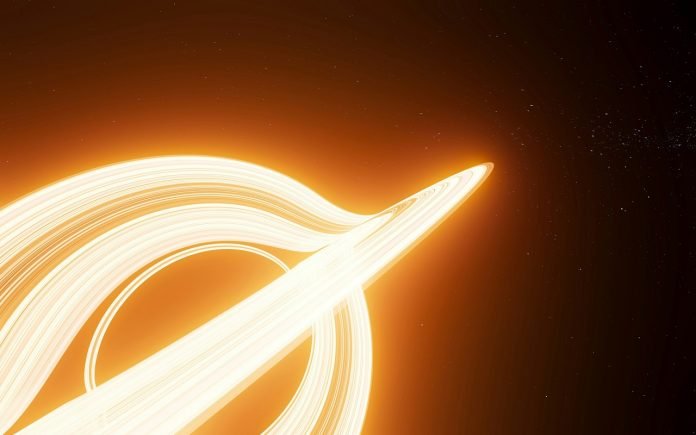
For the past seventy years, astrophysicists have speculated about the existence of “kugelblitze,” special black holes formed from extremely high concentrations of light.
These theoretical black holes were thought to be linked to phenomena like dark matter and even proposed as potential power sources for futuristic spaceships.
However, new research from the University of Waterloo and Universidad Complutense de Madrid shows that kugelblitze cannot form in our universe.
This groundbreaking study, titled “No black holes from light,” is available on the arXiv preprint server and will soon be published in Physical Review Letters.
Eduardo Martín-Martínez, a professor of applied mathematics and mathematical physics, explains that most known black holes form from massive amounts of regular matter collapsing under their own gravity.
Einstein’s theory of general relativity suggests that any type of energy, including light, can curve space-time.
For years, scientists thought that a huge concentration of light could also lead to a similar collapse, forming a black hole. However, this idea did not account for quantum effects.
The research team created a mathematical model that includes quantum effects and found that the concentration of light needed to form kugelblitze is vastly greater than what we observe in quasars, the brightest objects in the universe.
According to José Polo-Gómez, a Ph.D. candidate involved in the study, before reaching such intense light concentration, quantum effects would cause the spontaneous creation of particles like electron-positron pairs, which would quickly move away, taking the energy with them.
This process would prevent the light from collapsing into a black hole.
Although these conditions are impossible to test on Earth with current technology, the team is confident in their predictions. Their model uses the same scientific principles that are behind positron emission tomography (PET) scans, which are common in hospitals.
To understand this phenomenon, Martín-Martínez compares it to the annihilation of matter and antimatter that occurs in PET scans. Electrons and positrons can annihilate each other and turn into photons, or light particles.
The team’s results are based on a phenomenon called “vacuum polarization” and the Schwinger effect. Essentially, when there is a high concentration of photons, they can transform into electron-positron pairs, which then scatter away, taking the energy and preventing the formation of a black hole.
While the impossibility of kugelblitze may be disappointing for some astrophysicists, this discovery is a significant achievement in fundamental physics.
It highlights the importance of partnerships between applied mathematics, the Perimeter Institute, and the Institute for Quantum Computing at Waterloo.
Polo-Gómez emphasizes that although these discoveries may not have immediate applications, they lay the groundwork for future technological innovations. Just as the science behind PET scans was once theoretical, today’s theoretical research could become tomorrow’s medical technology.
Source: University of Waterloo.



